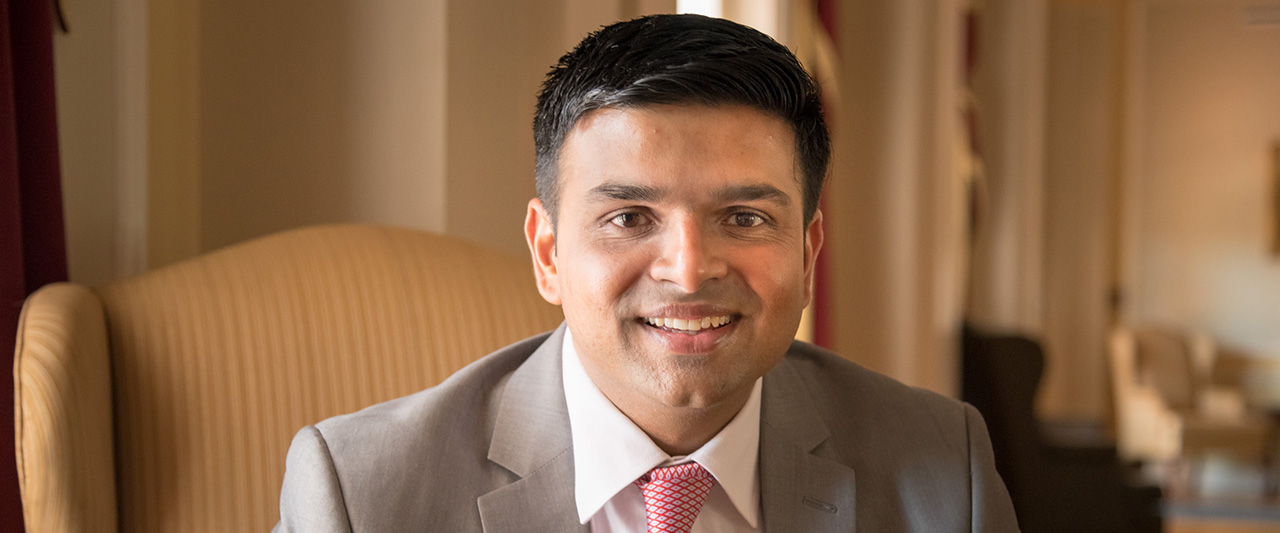As a young undergraduate student, Dr. Ramesh Kaipa had a very different plan for his life. “I had intended on becoming a medical doctor,” Kaipa said, “but I’m glad that I chose this profession.”
According to Kaipa, one of the great challenges in speech/language pathology and audiology is that it is largely seen as a female-oriented profession. His graduating class, he explains, was nearly 90-percent female.
“Male students often don’t want to give it a shot, and I think that is a great stigma,” Kaipa said. “There are very exciting things in this field that will appeal to every kind of student, regardless of gender or background. Once I enrolled in my undergraduate program, I knew that there was no going back.”
Seven years ago, as he was wrapping up his doctoral education at the University of Canterbury in New Zealand, Kaipa began the process of interviewing at quite a few U.S. institutions, including Oklahoma State University.
“I was nervous, of course,” Kaipa remembered, “but when I got to OSU, I realized that there was something that stood out about this campus: People were very warm and welcoming here, and I enjoyed that immensely.”
When the department of Communication Sciences and Disorders offered him a tenure-track position, Kaipa leapt at the opportunity, even before he had heard from any other universities.
“It was my first offer, and I accepted it immediately, and I have no regrets,” Kaipa said. “It remains one of the best decisions I have ever made. I have enjoyed working with OSU for the last six years, and I enjoy continuing working with the people here.”
Now the newly-appointed head of the Department of Communication Sciences and Disorders, Kaipa said that beyond the warm and friendly atmosphere of the campus, one of the aspects that appealed the most to him was the academic freedom OSU offered.
“I was not told, ‘This is (the research) you ought to be doing,’” Kaipa stated, “which has allowed me to not only teach more effectively, but also pursue innovative research projects.”
The department is ranked in the top half of speech/language pathology graduate programs in the United States. Kaipa envisions moving into the top 25 percent as the department focuses on training students to be excellent clinicians who are not only knowledgeable about modern trends, but are also involved in cutting-edge research that will have a profound effect on the profession.
“Ours is a healthcare profession,” he said. “I can think of thousands of challenges, but the one thing that stands out the most is training students to be clinicians who are involved in evidence-based practice.”
Kaipa and the department are focused on training students to be well-versed in working with patients from multicultural backgrounds.
“This is a very exciting time for our department,” Kaipa said. “All of our faculty focus on making students aware of the evidence that is out there, so they can incorporate it into their assessment and treatment plans of their patients. We have also started incorporating aspects of multiculturalism into our graduate courses, and down the line we are planning on offering a specific course that emphasizes multicultural aspects of communication sciences and disorders.”
Kaipa said he foresees great things for the CDIS department at Oklahoma State University.
“We have expanded our faculty, the student enrollment numbers are only increasing, our outreach programs have expanded exponentially, and will continue to do so as we work toward becoming one of the premier speech and language pathology programs in the country.”
What is the greatest draw for Communication Sciences and Disorders? Kaipa said it is all about the rewarding experience that a student experiences every day.
“This is a very satisfying and rewarding career,” he said. “The students are endowed with a unique opportunity to improve the quality of life of a patient with a communication disorder, by helping him or her speak, hear or even eat better. I want them to be adept at assessing and treating communication disorders, but also I want all of my students to realize the impact that they will have on these patients for the rest of their lives.”

